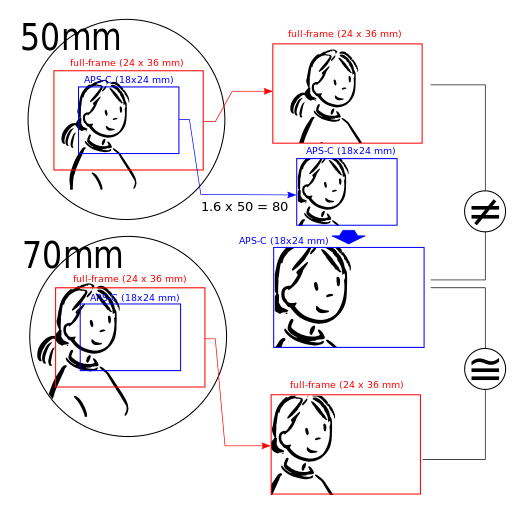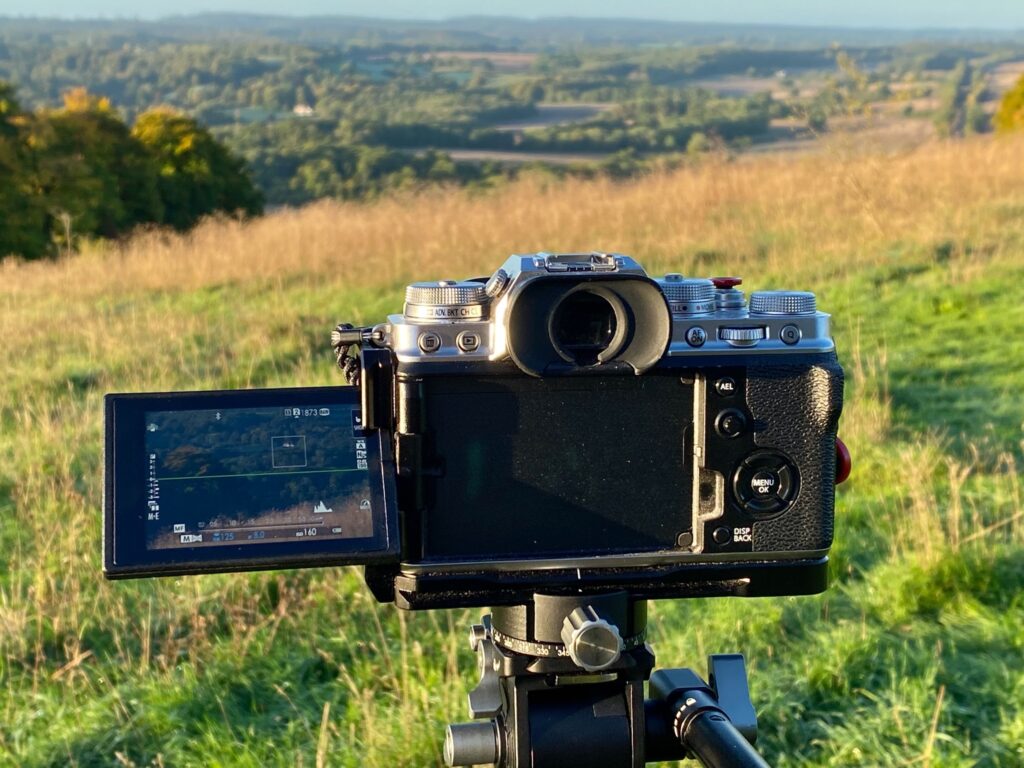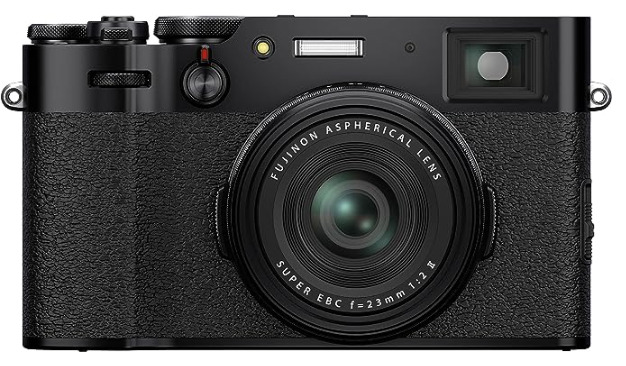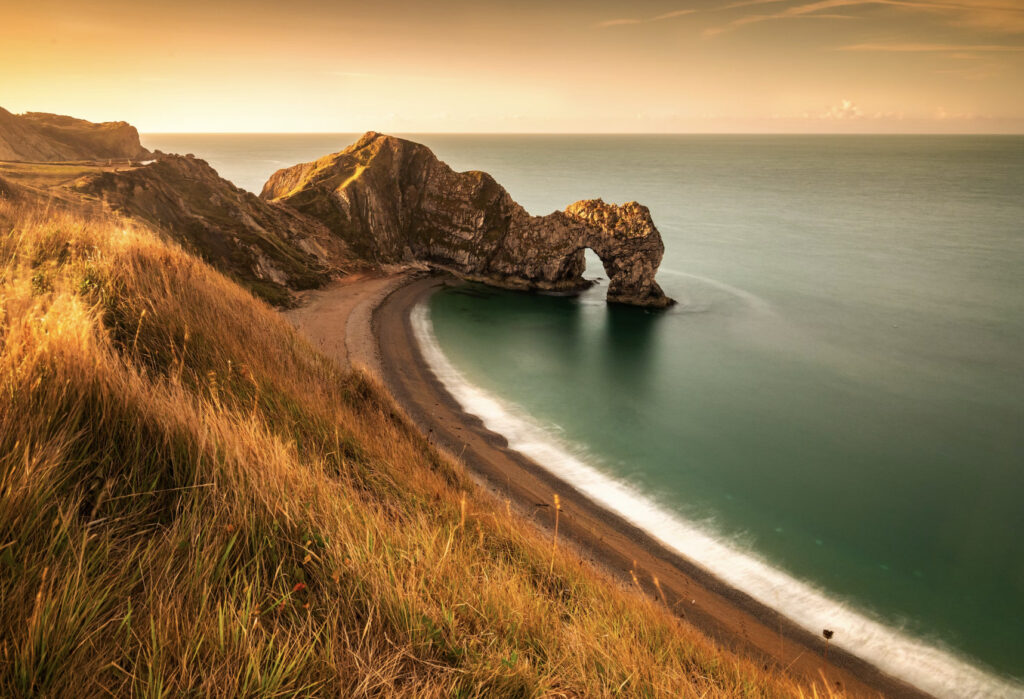Too many photography subjects get muddled in argument: this brand vs. that brand; one technique vs. another. Yours vs. mine. Better vs. best. Certainly, one could argue credibly that their current pro level dSLR is better in every way than the point and shoot camera they started out with and no one would even challenge that notion.
But photography is art. Art is subjective. And the tools used to make said art tend to fall under the same principle of subjectivity as the art itself. People, of course, have their personal preferences on things and there’s nothing wrong with that; being informed about others’ preferences can actually be helpful by expanding the options we make available to ourselves.
At some point during your time as a photographer, you have likely encountered some poor individual who posts on an Internet message board that they need help deciding whether to upgrade to a “full frame” camera or stick with their “crop camera,” totally unaware of the upheaval that would ensue as a result of this rather innocent inquiry. The topic of full frame vs. crop sensor cameras is a legitimate concern that often gets bogged down by useless arguing. So if you are someone who has ever wondered about this topic, particularly if you are considering purchasing a new camera, a level-headed approach to the issue might do you some good.
Full Frame and Crop Sensor: What Do These Terms Mean?
This whole discussion hinges on the traditional 35mm film SLR camera as a reference point. Obviously, digital cameras don’t use film; they use a sensor that receives and reads the values of accumulated electrons allowed into the camera via the lens, converting those bits of data into a digital image. A full frame digital SLR, then, refers to a camera whose sensor size is roughly equivalent to a 35mm film frame (24mm x 36mm).
A “crop” sensor, on the other hand, is simply one that is smaller than a full frame sensor, thus capturing only a portion of the image that a full frame sensor would, due to the fact that a small sensor magnifies the angle of view. These smaller sensor sizes vary by manufacturer, though the most common naming convention used by crop sensor cameras is the APS-C. For Nikon, Sony, Pentax, and Fujifilm dSLRs, an APS-C sensor measures in the range of 23.5mm x 15.6mm to 23.7mm to 15.6mm. Canon APS-C sensors measure 22.2mm x 14.8mm. These measurements are used to determine what is known as a sensor’s crop factor (Nikon, Sony, Pentax, and Fujifilm APS-C cameras have a crop factor of 1.5, while Canon’s APS-C cameras have a crop factor of 1.6).
What Effect Does a Smaller Sensor Have on Your Photographs?
As stated above, a smaller sensor magnifies your field of view and also causes an apparent increase in the focal length of whatever lens you are using. The focal length of your lens, of course, doesn’t magically change when you take it off a full frame camera and attach it to a crop sensor camera; the only thing that changes is your angle of view, a phenomenon that is simply a function of sensor size.
This apparent difference in focal length, however, can impact how you frame your shot. If, for example, you are using a camera with a crop factor of 1.6 and are looking to recreate the framing provided by a 50mm lens shot from the same distance on a full frame camera, then some simple math might lead you to the conclusion that a 35mm lens is what you will want to use (35mm x 1.6 = 56mm). The 35mm lens won’t become something it’s not just because it’s attached to a crop sensor camera, but it will closely approximate the framing of a 50mm lens on a full frame camera.

Advantages – Full Frame
- Low light/High ISO: One of the features most commonly touted about full frame cameras is their low noise levels, specifically when shooting at high ISO settings; the larger sensor and its resident photosites are able to more efficiently collect light. This gives full frame cameras a considerable advantage in low-light and night photography.
- Viewfinder: A bigger, brighter viewfinder makes manual focusing easier.
- Wide angles: A full frame camera allows you take full advantage of wide and ultra wide angle lenses. If you enjoy the perspective of a 24mm lens on a full frame camera, you may not be satisfied with the 38mm effect you would get with the same lens on a crop sensor camera.
Advantages – Crop Sensor
- Crop factor: Sports and wildlife photographers may actually prefer the crop factor as it can effectively provide more reach, keeping you from having to get physically closer to your subject.
- Cost: Crop sensor cameras and the lenses made especially for these cameras (such as Canon’s EF-S line and Nikon’s DX line) are typically less expensive than their full frame counterparts.
- Fewer visible lens issues: Imperfections tend to become more apparent as you move further away from the center of an image. So, vignetting, for instance, is less of a concern on cameras with smaller sensors due to the fact the edges are cropped.
The advantages listed for each camera type in no way represent the entire scope of why someone might prefer one over the other. And are there any disadvantages to either? Again, it’s a subjective matter. If you desire top high ISO performance but the size and weight of a camera such as the Nikon D4 or Canon 1D X are off-putting, there are full frame options available in smaller, lighter bodies (not to mention lower prices), while crop sensor cameras continue to make fantastic strides in ISO performance.
There are those who champion full frame cameras because they are “better” in every way than crop sensor cameras; it’s a valid opinion insofar that it applies to their own experiences. But others will express the same sense of satisfaction with their crop cameras, albeit for different reasons. Bigger doesn’t automatically mean better; and even if there are features we could all agree on as being objectively “better,” the question of how much better remains. Are those better features enough to mitigate cost/size/weight considerations and make a smaller option more desirable? That all depends on what your individual wants and needs are. That’s really all that matters. Don’t get caught up in the intellectual dishonesty of ideas such as “professionals only use full frame” or “crop sensors are for amateurs.” Go with whatever works best for you and your style of photography.





21 Comments
There are many good points made in this post “Full Frame vs. Crop Sensor Cameras” and In my humble opinion a great shot is a great shot, whatever media device you used to capture it?
Although if your passion for photography is asking for full frame camera and you can afford it, make sure you can also afford a quality zoom lens and enjoy!
Something worth touching on is the problem with lens compatibility – if somebody has a suite of lenses fit for cropped sensor and they choose to go full frame, they’re likely to need a new set of lenses to cover the sensor properly.
If cropped sensor user has a lens that would work on full frame, they may be disappointed by seeming loss in resolution towards the edge of the new frame, as at the moment the cropped sensor just picks out the central ‘sweet spot’.
I’m not sure that it’s far to say a cropped sensor magnifies, simply that it crops the image that is available – had the camera manufactuers chosen to, they could have set the sensor in a different position in the camera and achieved ‘full frame’ – they were restricted to keeping the sensor in the same position in the camera so that existing lenses would focus and that newcomers wouldn’t have to have a new set of lenses when they went digital.
But as you rightly allude in your article, it’s not really down to the camera but the person behind it and the final use that person wants to make of the picture.
One benefit of using a lens on a full frame body after the crop frame is the lower noise at higher ISO. Typically the affordable ff compatible lenses are f/4 and slower giving noisy results compared to full frame. The photos will take on the full benefit that the cleanest lenses provide when used on a camera with a better sensor (full frame).
You missed the one reason I really want to move to full frame – shallower depth of field.
Sensor size does not determine depth of field – it is focal length and aperture. For example a 50mm at f1.4 will have the same depth of field on a full frame as on a crop sensor. What changes is the angle of view.
I am confused with the idea of angle of view – would it not be the same if you post-cropped your full frame to match the crop sensor? In other words if you wanted your 300mm lens on afull frame to look like it was taken with a croped sensor canon, would not post cropping the image give you the equivalen of a 480mm lens?
Wrong. Circle of confusion is one of the 4 four factors in depth of field. Circle of confusion depends on the photoreceptor. Big format has (sensor or film) less depth of field.
Sorry for my english. I speak spanish.
Dokt Faust,
You are wrong on it. A larger sensor or film gives a deeper depth of field. Not the other way around.
What is generally meant when someone says that a FF provides a more shallow DoF is that an image made on a FF camera, as compared to an image made on a crop sensored camera, using the same lens, using the same aperture, framed exactly the same will provide a more shallow DoF because you have to shoot from farther back using the crop sensored camera to get the same framing. Therefore, the FF will provide more shallow DoF for any similarly framed image.
If you understand how aperture effects DOF and why, then you’ll understand that a smaller sensor acts the same as a smaller aperture thus increasing DOF.
That guy Ito might imply that if he uses FF, he can get closer to the subject just as how it may look if he uses a crop sensor. Because of that, the depth of field is shallower.
I have a crop sensor Nikon D 90, and I love it. Here’s a reason I don’t move to a full frame, those large files are going to clog up my workflow. Huge files means now I need to buy more storage and a bigger computer to handle all those megapixels that I keep trying to move around in Lightroom. And, because I shoot mostly HDR, just multiply that problem by three or five or seven! Yikes!
For landscape or architectural photography full-frame is a better choice. These cameras allow full advantage to be taken of wide-angle and tilt-shift lenses.
For a birder, it depends. What is important is pixel density. A full frame and crop sensor with the same pixel density will deliver the same resolution on an image that is cropped below the size of the crop sensor image, (which is usually the case with bird shots, even those take with a 600 mm lens.) A weather proofed camera is essential for a birder, and that may mean jumping to a D800 (for someone using Nikon.) The new high pixel density (24 mp) APS-C cameras in the Nikon line (D3200, D5200, D7100) are probably heaven sent for the birder, but only the D7100 has a reasonable level of weather proofing. In terms of pixel density, these cameras are about as far as one would want to push pixel density, as diffraction limitation begins to be an issue at F5.6.
If a D4x is on the horizon, it may be the best option for a birder, depending upon the pixel density offered. (I am assuming a comparable density to the APS-C cameras which would yield an approximately 54MP camera.) Since a serious birder has probably dropped close to 10K for his big lens, 6K for the camera is not an unreasonable price.)
Studio work is probably best done with full frame, (or medium format if you really want to blow the budget.)
A crop sensor is probably best for street photography to keep the visibility, and intimidation factor to a minimum.
Wedding and event work is another win for full frame due to the ability to handle low light better.
If weight is an issue, full frame may be too heavy, (but using the F1.8 primes often keeps the weight in check.)
I have a Nikon D3S, D3 and D2Xs, so, all formats are covered.
I used to shoot motorsport, and, the D2Xs was a great help in “nice fine weather” when shooting with my 500mm F4 Nikon lens. Gave me an effective 750mm focal length.
However, I subsequently purchased a D3, and a D3S. The D3 bodies seem to be much faster, and I use them more.
I would not get rid of the D2Xs, as it has its uses, as long as you don’t push the ISO much. The most ISO I have ever used with the D3 bodies was 2,000 ISO at the Terracotta Warriors in China about 18 months ago.
The ” Full Frame” was handy as I used my Nikon 14-24mm lens at the Terracotta Warriors and the small sensor would not have allowed me to get the huge building with all the ” warriors” in . I had to shoot at 2,000 ISO and the D2Xs would not have worked.
So far, I haven’t been tempted by the D4..Maybe a D4S or D5 ?
Another thought.. I could not use my Nikon 8mm f2.8 with the crop sensor body.:-)
Jason: Thanks for your timely and informative article. After long deliberation, I just made the upgrade to a full-frame DSLR and considered some of these same factors in my decision. I still encountered some unanticipated costs, detailed in my recent blog posting: https://www.mwrphotos.com/blog/2013/4/upgrading-to-a-full-frame-camera-ownership-costs-and-benefits
This is a very informative observation. But I personally think that the idea is subjective because photography and very nature thereof is an opticle illusion. The photographer still has to take the picture at the angle he/she seems fit no matter what others may think.
In the second section, the author makes the following statement:
“reads the values of accumulated electrons allowed into the camera via the lens”
As a retired electron microscopist, I can assure you that electrons do NOT pass through glass lenses! (We used electomagnetic fields). I think he meant photons.
Thanks for a very simple – easy to understand explaination to what I thought was a complex question. Guess I’ll keep my crop sensor camera for the extra reach of my long lens, but need to get a full sensor (Canon 6D – is what I’ve been looking at) for my wide angle/landscape shots
I am a novice at best, but love taking millions of pics of my kids. I also enjoy taking pics and would like to get the most out of what I am shooting. I have read that full frame shots will enlarge better than crop-sensor shots. Is this true and to what extent? I am looking to upgrade from my XSI this is only a hobby for me, but my kids are still young and if the images I am taking could be much greater by spending another $1000 then that might be worth it to me. I had been looking at the 70D there are some decent bundles out there, but if full frame is a better way to go for what I am wanting and to give me more freedom and keep me from buying another camera in 4-5 years then I might just pony up the extra money now. Also is 55-250 going to be enough to shoot sporting events or will I need more zoom? I currently have the kit lens (don’t use it) and a 50mm prime which was well worth the $100 I spent on it. Any help or critique is appreciated.
Why do all these examples simply ignore m4/3rds. One of the best cameras of last year was the Olympus OMD. I love the 2x factor and the fact that I can use almost any lens ever made with an adapter is simply amazing. The availability of using these lenses as well as the size of your system is a huge advantage. You can’t take a photograph unless you have a camera with you and with the mirrorless m4/3rds system greatly increases those odds.